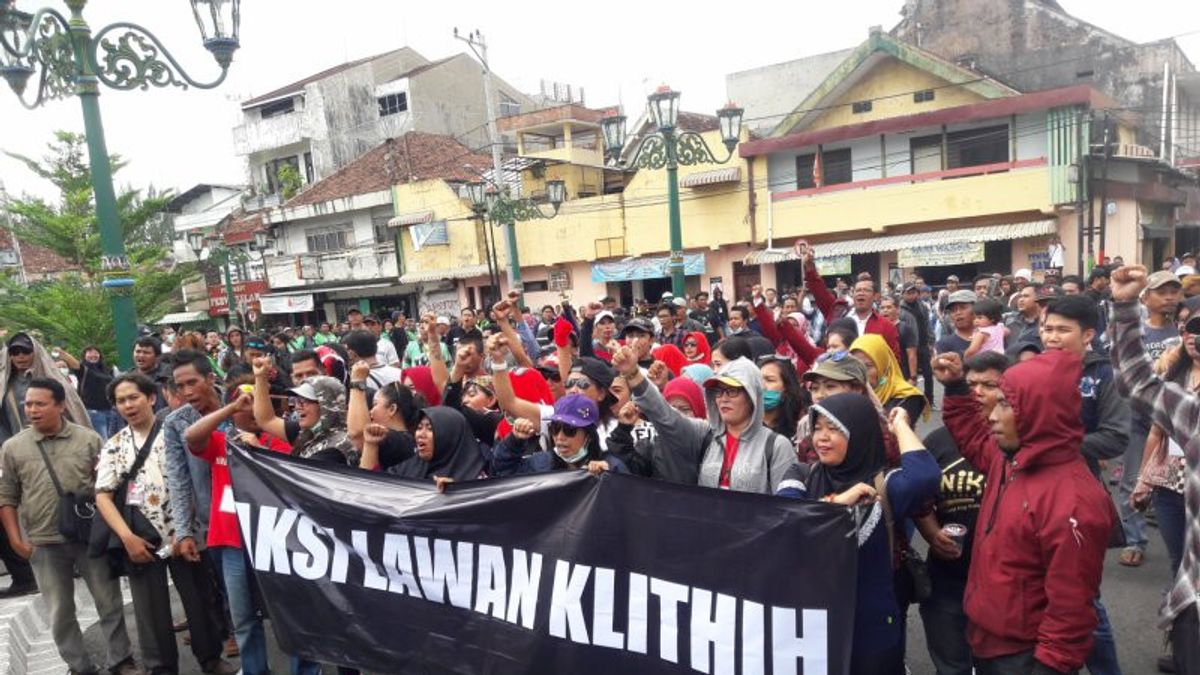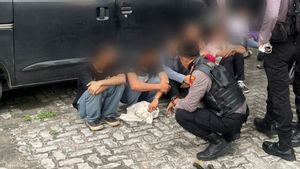JAKARTA - Yogyakarta was shocked by the death of an 18-year-old student from Kebumen, Central Java on Jalan Gedongkuning after being attacked with a sharp object. He was attacked on Sunday 3 April when he was about to buy food for sahur at two o'clock in the morning, the alleged perpetrators of the attack were the klithih gang.
In recent years, street violence, which is often called klithih, has repeatedly occurred in DIY. The perpetrators are usually young people or students and some are still minors. When in action, the perpetrators of klithih usually ride motorbikes and use sharp weapons.
The klithih phenomenon has haunted the city for a long time with the nickname this student city, and almost every year it reappears. Now the hashtags #YogyaNotAman and #SriSultanYogyaDaruratKlithih are back on Twitter.
What is Klithih?Klithih is a social phenomenon that occurs in the Special Region of Yogyakarta and its surroundings, especially Klaten and Magelang. Criminal incidents involving teenagers aged 14-19 have emerged in the 1990s.
In general, klithih targets students who are competing students or members of rival gangs in quiet areas, then physically abuses the victim.
However, the perpetrators also sometimes take the victim's belongings so that it turns into a robbery. Klithih actions have caused many victims to die due to severe physical torture.

Klithih itself comes from the Javanese language, which means activities to look for angina outside the house or wandering. Meanwhile, according to the sociologist at Gajah Mada University, Arie Sujito, the original meaning of the term klithih is going out at night to relieve fatigue.
“In the past, Klithih was actually just an activity for people to go out at night looking for activities to overcome fatigue. While the term nglitih is used to describe leisure activities. However, the meaning of klithih then underwent a shift and became synonymous with violent acts with sharp weapons," said Arie.
Difference with BegalSome people see klithih and begal as the same crime. Both are crimes that use motorbikes, and involve acts of violence. However, if examined both are different types of crime. So what's the difference?
Klithih from the origin of the word means walking around in a positive way. But the term has changed its connotation because it is used for things that lead to crime and violence by youth to people on the streets.

But lately klithih attack parties who are not enemies. Attacks are aimed at motorists or road users, who are randomly selected by the klithih perpetrators.
Meanwhile, from the beginning, the begal had an economic goal, namely controlling the victim's property by force using a motorbike. Thieves generally look for targets who drive alone, then confiscate the victim's property.
There is IndoctrinationAccording to UGM criminal sociology, Suprapto, the goal of youth groups is to do klithih as a challenge in order to be accepted into the group. According to his study, the klithih act was a recruitment event carried out by youth gangs
The new recruits are challenged to create a riot by hurting others in order to be accepted as a member of the group.
“The more he dares to hurt him, the more troublesome he gets outside, the more he is praised so that his psychological condition makes him braver. Such a phenomenon exists," said Suprapto.
According to him, the phenomenon of street crimes involving children and teenagers as the perpetrators still exists, because there are groups who want their existence to exist.
“This is not pure child or juvenile delinquency. There are certain parties behind the group who participate in providing indoctrination by using these children," Suprapto said.
Children and adolescents are a phase of life development where humans are looking for their identity. But unfortunately their desires are used by a few people for certain purposes, thus causing street crimes to continue to exist.
Legal proceedingsThe Governor of the Special Region of Yogyakarta, Sri Sultan Hamenku Buwono X, asked the perpetrators of street crimes to be prosecuted without selective discrimination.
"This is a criminal offence, I think it will continue to be sought and processed. For me, it's already excessively processed legally," said the Sultan, Monday, April 4.

The Sultan encouraged the police not to apply diversion or transfer the settlement of children's cases, from the criminal justice process to the extrajudicial process. This is because the victim died.
Here are some tips so we can stay safe while in Yogyakarta:
It's best not to go out late at night or early in the morning. Judging from a number of incidents, klithih generally perform their actions at these hours. Avoid riding a motorbike alone, especially in the early hours of the morning, because klithih cases are in the form of direct contact from motorbike to motorbike. It's better to avoid traveling alone, especially at night, because klithih generally attacks one person. Traveling in groups anticipates criminals committing crimes. Avoid lonely roads, it is very important to know information about access to tourist sites and lodging before vacationing in Yogyakarta. Yogyakarta itself has many streets that are fairly busy, such as Malioboro Street, Mangkubumi Street, Mataram Street, and Brigjen Katamso Street. If tourists stay in an area that is a bit far away, it is better to pass through these streets because they are crowded. Stay alert, the most important thing is that tourists stay alert to the surrounding conditions. If you find anything unusual, you should immediately report it to the authorities or seek help.The klithih gang and the robbers are both violent crimes that often result in fatalities. People should always be vigilant when driving, especially if you are alone. Report a motorist who exhibits suspicious behavior such as following a driver who is alone.
The English, Chinese, Japanese, Arabic, and French versions are automatically generated by the AI. So there may still be inaccuracies in translating, please always see Indonesian as our main language. (system supported by DigitalSiber.id)












